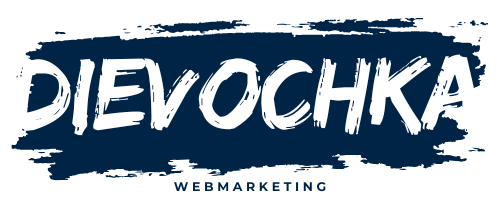In the bustling, digital marketplace of 2025, brands compete fiercely for the attention of their audience. As businesses strive to make an impact, a potent Call-to-Action (CTA) can be the difference between conversion and obscurity. But what makes a CTA compelling enough to prompt a user to take the desired action? In this article, we’ll delve into the art and strategy of crafting a CTA that not only draws visitors but also fosters a meaningful engagement with your brand.
Understanding the Essence of a CTA
Whether we’re browsing a website or scrolling through social media, CTAs are omnipresent. Yet, many businesses falter in creating a CTA that truly resonates with their audience. The hallmark of an effective CTA lies in its ability to seamlessly blend with the content while standing out as a clear direction for the user. But why exactly is it so crucial?
Clarifying the Objective:
A CTA is essentially the compass that guides a user through the journey on your website. It provides a clear indication of what you want your visitors to do next. Whether it’s signing up for a newsletter, downloading a resource, or making a purchase, a CTA offers clarity and purpose.
Engagement and Conversions:
A well-crafted CTA can significantly boost engagement levels and drive conversions. It acts as a bridge between interest and action, encouraging users to transition from passive observers to active participants in your brand’s narrative.
Building Brand Trust:
When a CTA is clear and purposeful, it enhances the user’s experience, fostering trust with your brand. By providing a clear path forward, you establish a sense of reliability and professionalism that can enhance brand loyalty.
Crafting a Memorable CTA:
To create a CTA that resonates, hone in on language that speaks directly to your audience. Use persuasive, action-oriented verbs and keep the message concise yet impactful. Remember, a great CTA isn’t just about urging action; it’s about inspiring connection.
The Anatomy of a Compelling CTA
Crafting a memorable CTA requires more than just creative wordplay – it’s about understanding the psychology of your audience and strategically placing your message where it will have the most impact.
Strategic Placement:
The location of a CTA is as critical as its wording. CTAs should be strategically positioned where users naturally transition between stages of engagement on your website. Whether it’s a blog post, a product page, or a landing page, ensure it aligns with the user’s journey.
Actionable Language:
Words have power, and in the realm of CTAs, they’re your greatest ally. Use dynamic verbs like “Discover,” “Start,” “Join,” or “Transform” to create a sense of urgency and excitement. Tailor the language to reflect the action you want the user to take, making it personal and relevant.
Visual Appeal:
Never underestimate the power of visual design in enhancing a CTA’s effectiveness. Employ contrasting colors that draw the eye without clashing with your page’s overall aesthetic. The design should be clean, making the CTA button easy to spot and click.
Simplicity and Clarity:
A common mistake is overloading a CTA with too much text or complex ideas. Keep it simple and direct, ensuring the user understands exactly what action to take. A clear and concise message avoids confusion and maximizes effectiveness.
Tailoring CTAs to Different Platforms
In an age where digital marketing extends beyond the confines of a single platform, understanding how to tailor CTAs to different environments is paramount. Let’s explore how to adapt CTAs for various channels and ensure consistent effectiveness.
Social Media:
On social media, CTAs must be brief and impactful, capturing attention in just a quick glance. Whether it’s “Swipe Up to Learn More” on Instagram or “Click Here” on Facebook, the CTA should seamlessly integrate with the platform’s unique user experience, often relying on visual elements to reinforce the message.
Email Campaigns:
Email offers a unique opportunity for longer-form CTAs, but brevity remains key. Use compelling subject lines and strategically placed CTAs within the email body to guide the reader’s journey. Ensure the CTA is prominently displayed and linked directly to a landing page for smooth navigation.
Mobile Apps:
Given the limited screen space on mobile devices, CTAs in apps require strategic placement and minimal wording. The objective is to optimize user experience without overwhelming them. Simple, direct prompts like “Tap to Explore” can drive engagement intuitively.
Adaptability Across Devices:
Remember, your audience is accessing content from a variety of devices. Ensure CTAs are mobile-friendly, responsive, and consistent in design and messaging, no matter the platform.
Measuring the Success of Your CTAs
While crafting an engaging CTA is crucial, understanding its impact is equally important. Measuring the success of your CTAs can help refine strategies and boost overall marketing effectiveness.
Analyzing Click-Through Rates (CTR):
Track the number of clicks your CTA receives relative to impressions. A high CTR indicates that your CTA is effectively grabbing attention and prompting users to take action.
Conversion Rates:
While a click is a positive sign, tracking conversions is essential for assessing the CTA’s true impact. Monitor how many people complete the desired action after interacting with your CTA.
A/B Testing:
Experimentation is key to perfecting CTA strategies. Run A/B tests to compare different versions of your CTA. Analyze which wording, design, or placement yields the best results and refine your approach accordingly.
Feedback and Adjustments:
Encourage users to provide feedback about their experience. Use this feedback to make informed adjustments to your CTAs, ensuring they remain relevant and effective in a constantly evolving digital landscape.
In conclusion, CTAs are the unsung heroes of digital marketing, and their significance continues to grow in 2025. As we navigate the intricate web of online commerce, the ability to craft a compelling CTA is a crucial skill for any brand. By understanding the essence of CTAs, tailoring them to specific platforms, and measuring their success, we can create a more engaging and impactful user journey. Let’s embrace the power of the call and transform visitors into devoted followers of our brand.
FAQ
What exactly is a ‘call-to-action’ in marketing?
A call-to-action (CTA) is a prompt on a website or advertisement that encourages the audience to take a specific action, such as “Buy Now,” “Subscribe,” or “Learn More.” It guides the user towards the next step of engagement with a brand.
Why is it crucial for a brand to have a strong call-to-action?
A strong CTA is essential because it directly influences consumer behavior, turning passive viewers into active participants. It helps in driving conversions, encouraging user interaction, and ultimately achieving marketing goals.
What are some characteristics of an effective call-to-action?
An effective CTA should be clear, concise, and compelling. It should communicate urgency, be visually distinct, and align with the user’s needs and the brand’s goals. Personalization and strategic placement also enhance its effectiveness.
How does a well-crafted call-to-action impact customer engagement?
A well-crafted CTA boosts customer engagement by providing a clear path for interaction. It reduces uncertainty, increases user satisfaction by meeting their immediate needs, and fosters a stronger connection between the brand and its audience.
What are some common mistakes to avoid when creating a call-to-action?
Some common pitfalls include using vague language, having too many CTAs on a single page, neglecting mobile optimization, and failing to test different versions to see what resonates best with the audience. It’s crucial to ensure the CTA is aligned with the user’s journey and the overall marketing strategy.



